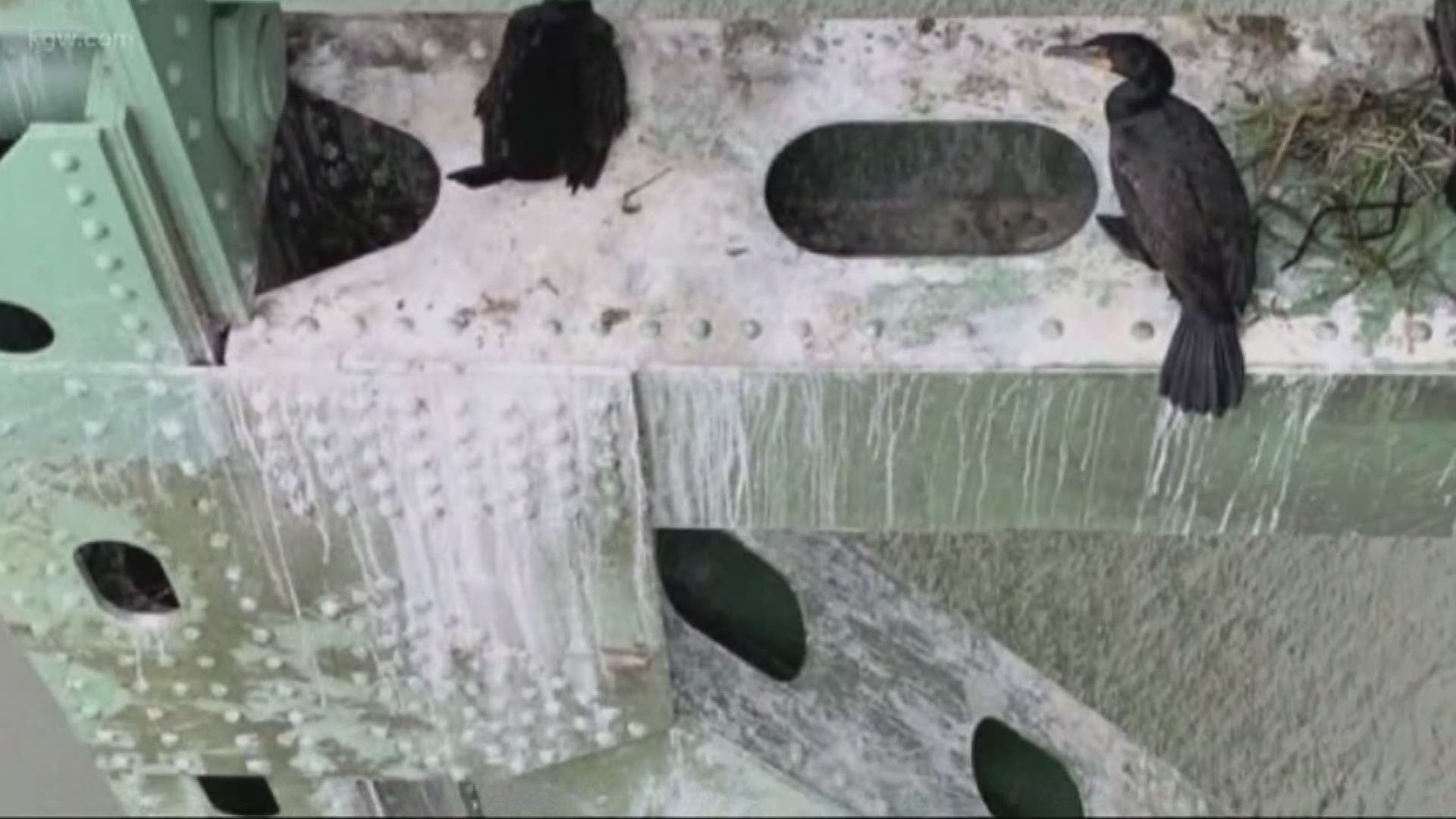ASTORIA, Ore. — Thousands of federally protected birds are making a new home on the Astoria-Megler Bridge while putting the structure at risk, according to state wildlife officials.
James Lawonn, an avian biologist with the Oregon Department of Fish & Wildlife, was in Astoria Monday to count how many double-crested cormorants were on the bridge.
"At minimum, I estimate 8,500 birds and 3,000 nests," Lawonn said. "That’s a 10-fold increase in five years."
Lawonn said not only are the cormorants feasting on endangered salmon, their droppings are corrosive and a danger to the bridge.
"Cormorant guano is really acidic and it's really hard on the paint job on the bridge," Lawonn said.
The Oregon Department of Transportation is responsible for maintaining the bridge including full inspections, repairs and painting.
"For most bridge projects, we’re able to avoid conflicts with birds by preventing nesting," Oregon Department of Transportation spokeswoman Angela Beers Seydel said. "This isn't practical on the Astoria-Megler Bridge because of its size, complexity, and nearly impossible access to the understructure of the bridge without equipment."
Beers Seydel said they’re concerned about the built-up bird guano for several of reasons.
"The guano coats and conceals bridge components, making it difficult to do our federally mandated bi-annual bridge inspection properly," Beers Seydel said. "We can’t see what needs to be inspected."
Beers Seydel added that the corrosive guano is reducing the life of the protective steel bridge coating.
"Painting may need to be done every 15 years instead of every 20, and it takes 12 years to paint," she said.
For people who live in and commute through Astoria, that’s a daunting prospect.
"When they do have to paint the bridge it impacts everybody," Astoria resident, Rex Ziak, said. "It brings traffic down to one lane and it costs a large amount of money to get this work done."
Lawonn said he believes the birds are on the bridge because of a management plan on East Sand Island about seven miles away where the Cormorants used to live.
Because the birds are federally protected, Lawonn said options for removing them mostly consist of scare tactics like water cannons, falconry and fireworks. They hope to come up with a viable solution in the next few years.
"Any management plan that we might come up with has the twist that it might push cormorants where we don't want them," Lawonn said. "It's likely we'll have to attract them to another location to prevent them from spreading out willy-nilly."

